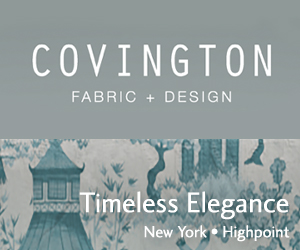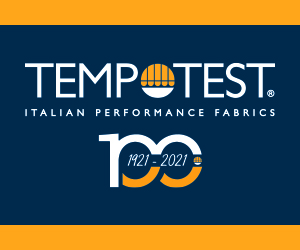Brazilian Producer Seeks Partnership to Increase Sales
January 21, 2002
Ṣo Paolo РIn 1996, Marielza Milani and her Antonio Celso bought Lerma from the Porto Seguro group. In 1999, in order to expand in the contract market, Milani bought the company Fitesa, which specializes in manufacturing fabrics for office furniture.
"Buying Fitesa (renamed Lerma Nordeste) strengthened our presence all over the country, but especially in the Northeast, where opportunity is growing every day," said Mrs. Milani. "There is so much opportunity in the contract market, and the Brazilian contract market is in continuous growth."
About 30% of the Lerma's production goes towards contract and 60% of Lerma Nordeste's output is for contract.
Lerma supplies to some of the country's biggest cinemas, theatres, restaurants, hotels and, especially, offices.
Another one of the company's goals is to increase exports. According to Mr. Milani, Brazil often faces the difficulty in meeting U.S. demand. "We would have great difficulty in manufacturing a million meters for export. Brazilian companies often concentrate on flexibility, variety and differentiating their products, and therefore it is difficult to manufacture on monstrous meters of fabric."
Milani said that establishing a partnership with a country abroad could solve that problem. "We would be interested in joining our market knowledge, flexibility, craftsmanship, the use of our space and equipment – and a great deal more – with the technology and expertise of a foreign partner in order to offer differentiated products, in order to bring something exciting and new to the market. We know our market extremely well, from north to south, and we have our clients."
Lerma manufactures about 1.3 million meters of textiles per year and has an annual turnover of approximately $10 million. The factories have a combined area of approximately 7,200 square meters.
The company has 110 employees and works with 64 looms. "We work mostly with natural fibres, but we also use polyester/cotton mixtures and we're now working with microfibre, which has a better touch than polyester," said a consultant to the company. "Lately there has been a great demand for chenille for upholstery. Our main fabric is jacquard, but we did not abandon ratier."
A team of six Lerma designers and textile technicians develops new collections every three months two annual collections with monthly complements. Milani said the company also does many color- and design-exclusives for customers.
Lerma products are mostly high and high-middle end. "We try to manufacture for the different segments of the market. We do manufacture something for the low middle end, but it is difficult to lower our price and therefore our quality so much," said Mrs. Milani.
The company sells through representatives who are based around the country. Among Lerma's clients are Artefacto, Donatelli, Fortaleza, Pink, Kawany, furniture manufacturers and others.
"Buying Fitesa (renamed Lerma Nordeste) strengthened our presence all over the country, but especially in the Northeast, where opportunity is growing every day," said Mrs. Milani. "There is so much opportunity in the contract market, and the Brazilian contract market is in continuous growth."
About 30% of the Lerma's production goes towards contract and 60% of Lerma Nordeste's output is for contract.
Lerma supplies to some of the country's biggest cinemas, theatres, restaurants, hotels and, especially, offices.
Another one of the company's goals is to increase exports. According to Mr. Milani, Brazil often faces the difficulty in meeting U.S. demand. "We would have great difficulty in manufacturing a million meters for export. Brazilian companies often concentrate on flexibility, variety and differentiating their products, and therefore it is difficult to manufacture on monstrous meters of fabric."
Milani said that establishing a partnership with a country abroad could solve that problem. "We would be interested in joining our market knowledge, flexibility, craftsmanship, the use of our space and equipment – and a great deal more – with the technology and expertise of a foreign partner in order to offer differentiated products, in order to bring something exciting and new to the market. We know our market extremely well, from north to south, and we have our clients."
Lerma manufactures about 1.3 million meters of textiles per year and has an annual turnover of approximately $10 million. The factories have a combined area of approximately 7,200 square meters.
The company has 110 employees and works with 64 looms. "We work mostly with natural fibres, but we also use polyester/cotton mixtures and we're now working with microfibre, which has a better touch than polyester," said a consultant to the company. "Lately there has been a great demand for chenille for upholstery. Our main fabric is jacquard, but we did not abandon ratier."
A team of six Lerma designers and textile technicians develops new collections every three months two annual collections with monthly complements. Milani said the company also does many color- and design-exclusives for customers.
Lerma products are mostly high and high-middle end. "We try to manufacture for the different segments of the market. We do manufacture something for the low middle end, but it is difficult to lower our price and therefore our quality so much," said Mrs. Milani.
The company sells through representatives who are based around the country. Among Lerma's clients are Artefacto, Donatelli, Fortaleza, Pink, Kawany, furniture manufacturers and others.
















